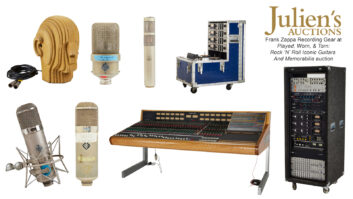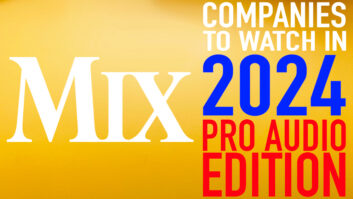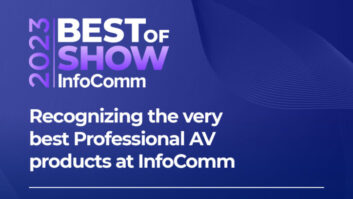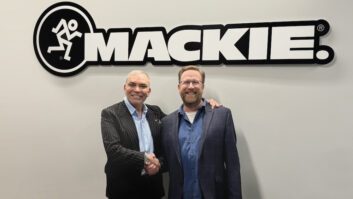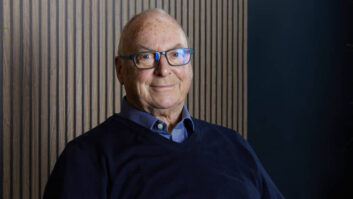Les Tyler, president, THAT Corp.
Les Tyler, president of audio semiconductor manufacturer THAT Corp. discusses semiconductor business and tech trends with Pro Sound News editor, Frank Wells.

PSN: How’s business? Are you seeing primarily the same customers? Are there new customers emerging?
Tyler: We have a steady mix of customers that serve the pro and semi-pro audio and audio-with-video business. Since we sell to most everyone in this market, the customers themselves don’t change that much; what we see is a slow and steady evolution as customers gain or lose market share, and as new manufacturers appear.
PSN: Any trends in sales in particular categories of components?
Tyler: THAT’s focus remains mostly analog, but in the last several years we’ve introduced a series of digitally controlled analog parts for microphone preamps. We did this in response to customer demand, and it’s become a significant growth area for us. And, we continue to be surprised by how steady our analog Blackmer® VCA and Analog Engine® business has been, despite the significant shift to DSP for so much audio signal processing.
PSN: How has the commoditization of much of what we’ve considered professional audio hardware affected your business? Do you have a greater number of customers or potential customers than in the past?
Tyler: THAT has seen consolidation among our customer base, but perhaps less than one might expect. For years now, many customers, including smaller ones, have been building products at large OEM/ODMs in Asia, often alongside their competitors’ products (who, in some cases, may be owned by the same parent). For us, both the OEM/ODM who orders and pays for the ICs, and the design engineer who’s responsible for putting THAT on the BOM, are our customers. The designers are often focused on differentiating their branded products, and choosing high-performance ICs is one way to achieve differentiation.
As evidenced by Hall A at NAMM this year, the pro audio business seems robust, especially given the slow US economy and the past year’s uncertainty in Europe. For THAT, our new ICs have generated business with new customers which has counteracted the consolidation. So, overall, we probably have about the same number of customers as in previous years.
PSN: Are your clients asking for any new solutions to their component needs?
Tyler: THAT’s customers exert continuous pressure to reduce cost while delivering the same or improved performance. So, as the audio world evolves, we’ve had to keep pace. One trend we see is to lower-power parts for battery- or USB-powered devices. That’s stimulated some interesting challenges, to which we’ve responded in a variety of ways.
PSN: Are there any new component recently released from THAT? What can you tell us about what is on the drawing board?
Tyler: THAT’s most recent releases are in mic preamps. This is one significant area where high-quality analog processing is required, and our ICs enable size and performance that’s difficult or impossible to match with discrete designs. Last year, we released a lower-cost analog preamp, the 1583, which follows our 1570 in the “deconstructed” approach we pioneered with that part. These parts make it easy to realize extremely high performance in analog-controlled mic preamps, but also serve as the heart of a digitally controlled approach.
On the digitally controlled front, last year THAT introduced the 5173 — a 3dB/step digital preamp controller. This follows our 1dB/step 5171 controller. Combined with the 1570 and 1583 analog gain blocks, we now have four mix-and match options for digitally controlled preamps at various price points and performance levels.
Also last year, THAT introduced a flea-power Analog Engine, the 4316. This part runs from 3.3V, consumes only 4mW, and serves as anything from the heart of a wireless mic compander to a stomp box compressor. Like all our Analog Engines, the 4316 has a true-rms level sensor and can be configured externally for a wide range of compression/expansion ratios. It’s a compressor, limiter, expander, gate, de-esser, etc. “on a chip.”
PSN: I know that last year was tough for many in the semiconductor manufacturing business. How has THAT weathered the market changes? How are you positioning yourself for future success?
Tyler: Not surprisingly, given the world economy, THAT’s IC business has been up and down over the past few years. But, our business hasn’t generally been in sync with the broader semiconductor business. Perhaps that’s because pro audio is a relatively isolated niche of the semiconductor business, probably even more so for analog pro audio. During slowdowns we’ve downsized, which has the benefit of making us leaner and more profitable as business increases, which it seems to be doing now.
In semiconductors., THAT has focused on the small niche of pro audio because we know it well and because it’s an area that’s neglected by large semiconductor makers. After all, pro audio is a small market compared to cell phones, tablets, and computers. But, pro audio is large enough to provide a good business for a small company like ours. As we see pro-audio companies trying to get more products out with fewer engineers, we can respond by providing customized, detailed applications assistance to those designers. This stimulates our business, especially when a designer with primarily digital skills must design an analog interface.
Another aspect that helps THAT prosper is that we provide analog foundry services to a range of customers, including some surprisingly large ones. And, we have a third segment: our dbx-tv® licensing business, that generates good cash flow from licensing digital technology to the consumer TV market.
PSN: Are there any new challenges on the manufacturing side of your efforts—materials scarcity or price increases?
Tyler: There are always challenges in manufacturing, especially as the world’s economy changes. The key for THAT is to stay nimble and focused, not just on our market but on the supply side of the chain. So far, we’ve managed to weather changes in suppliers, shortages of materials, and other ongoing manufacturing issues. We don’t see any insurmountable challenges looming ahead for us.
PSN: What have I missed? What do our readers need to know about how semiconductor industry changes will affect them?
Tyler: One place we’ve seen changes for our customers is in the number of “old fashioned” parts which have been discontinued by large semiconductor makers in the last few years. This has affected everything from matched transistors, and simple Field-Effect Transistors to USB interface ICs. In response, THAT has been able to help customers by supplying variations on our existing transistor arrays, and offering design assistance to customers needing to replace a quad VCA obsoleted by a larger semi maker.
THAT prides itself on never having discontinued a part without having a pin-for-pin replacement available. We can’t promise that we’ll never do so, but we try very hard to keep parts — like through-hole DIP packages and our Single-In-Line VCAs – available past the point where other makers might have dropped them. Pro audio manufacturers should consider carefully the likely future availability of any semiconductors they design into today’s products. Pro audio products generally have much longer lifetimes than cell phones and computers. Choosing a large semiconductor maker is no guarantee of future availability.
